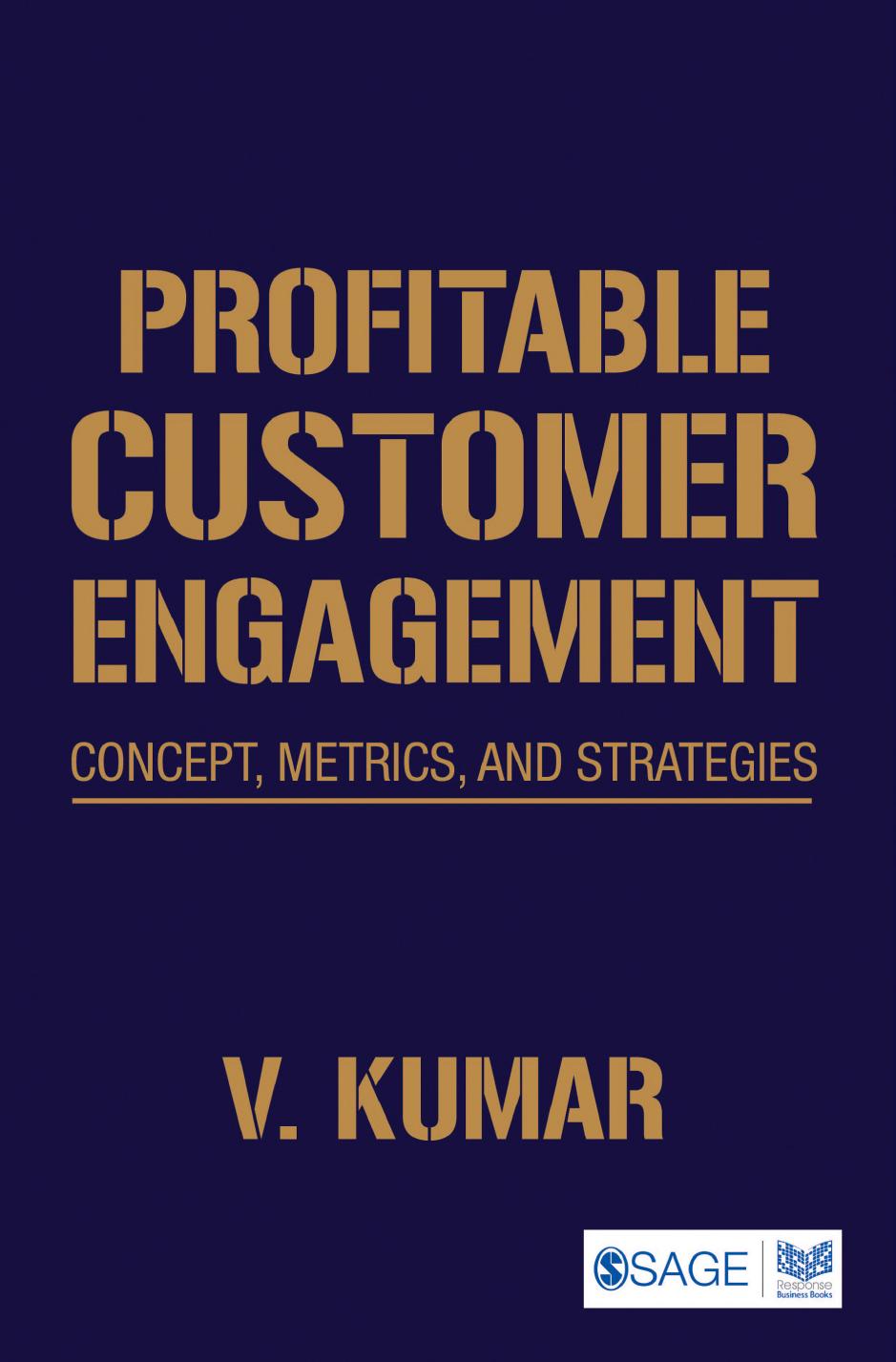Profitable Customer Engagement: Concept, Metrics and Strategies by V. Kumar

Author:V. Kumar
Language: eng
Format: mobi, pdf
Publisher: SAGE Publications
Published: 2013-10-29T14:00:00+00:00
Four seeding strategies are identified, according to the group of individuals that is selected for the initial communication about a referral program. High-degree seeding strategy is used when the initial marketing message (seed) is communicated to hubs, and it relies on their large number of connections. Low-degree seeding strategy is used when the seed is sent to fringes, expecting them to be more easily influenced (and influence others) because they are not overloaded by marketing information. High-betweenness seeding strategy is used when the seed is communicated to bridges, and it relies on their unique position in their social networks. Finally, random seeding strategy is used when the seed is communicated to random people, if there is no available information about the social network of customers. This research study15 demonstrates how these strategies perform in the context of referrals, comparing them in a controlled setting, through an experiment, and in practice, through a marketing campaign implementation, as presented in the following section.
PERFORMANCE OF REFERRAL SEEDING STRATEGIES
The seeding strategies were first compared using a group of 120 members of an online social networking platform. Based on their connectivity measures, the participants were grouped into hubs, fringes, and bridges, which were used to apply each of the four seeding strategies in succession. A different seed was sent to hubs (high-degree seeding), fringes (low-degree seeding), bridges (high-betweenness seeding), or random individuals (random seeding) every few days through personal messaging, asking them to forward it to friends. Successful referrals were tracked through a website that identified referred individuals, the message they received, and the name of their referrer. To encourage this process, two types of rewards were offered for each successful referral: either a small monetary reward (around ¢40) only for the referred individuals, or a reward for both the referring (¢20) and the referred individuals (¢25).
Even though participation was highly encouraged and reasonably incentivized, 55 percent of all participants were active by referring or being referred, with a total of 1,155 referrals. These activities produced some interesting results regarding the effectiveness of each seeding strategy. In particular, high-degree seeding increased the chance of successful referrals by 53 percent and high-betweenness seeding by 39 percent, as compared to random seeding. In contrast, low-degree seeding considerably lowered the chance of successful referrals by 81 percent less than random seeding. This indicates that low-degree seeding is the least effective, as other strategies are five to eight times more successful, so it is not a recommended strategy. The response difference between high-degree and high-betweenness seeding was not significantly large, which implies that both strategies yield similar results, so both could be used in practice. However, considering the difficulty of identifying bridges, which requires information about an individual's extended social network, the high-degree seeding strategy is the best practical choice. Regarding the incentives, extending them to both the referrer and the referred individual increased successful referrals by more than 37 times, compared to offering them solely to the referred participants. This supports the common practice in referral programs for
Download
Profitable Customer Engagement: Concept, Metrics and Strategies by V. Kumar.pdf
This site does not store any files on its server. We only index and link to content provided by other sites. Please contact the content providers to delete copyright contents if any and email us, we'll remove relevant links or contents immediately.
Influence: The Psychology of Persuasion by Robert B. Cialdini(4601)
The Miracle Morning by Hal Elrod(4422)
The Hacking of the American Mind by Robert H. Lustig(4085)
Pre-Suasion: A Revolutionary Way to Influence and Persuade by Robert Cialdini(3977)
Unlabel: Selling You Without Selling Out by Marc Ecko(3471)
Ogilvy on Advertising by David Ogilvy(3329)
Hidden Persuasion: 33 psychological influence techniques in advertising by Marc Andrews & Matthijs van Leeuwen & Rick van Baaren(3292)
Purple Cow by Seth Godin(3069)
Who Can You Trust? by Rachel Botsman(3024)
Kick Ass in College: Highest Rated "How to Study in College" Book | 77 Ninja Study Skills Tips and Career Strategies | Motivational for College Students: A Guerrilla Guide to College Success by Fox Gunnar(2998)
This Is Marketing by Seth Godin(2903)
I Live in the Future & Here's How It Works by Nick Bilton(2844)
The Marketing Plan Handbook: Develop Big-Picture Marketing Plans for Pennies on the Dollar by Robert W. Bly(2795)
The Power of Broke by Daymond John(2774)
Building a StoryBrand by Donald Miller(2754)
The 46 Rules of Genius: An Innovator's Guide to Creativity (Voices That Matter) by Marty Neumeier(2678)
Draw to Win: A Crash Course on How to Lead, Sell, and Innovate With Your Visual Mind by Dan Roam(2639)
The Tipping Point by Malcolm Gladwell(2559)
Market Wizards by Jack D. Schwager(2540)
